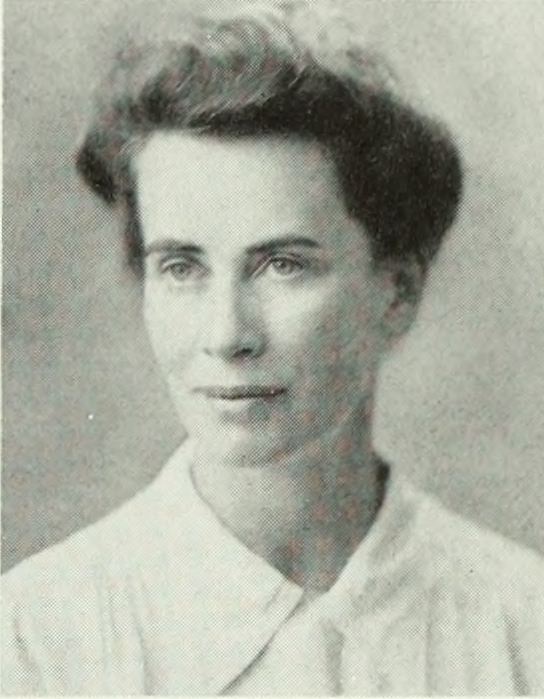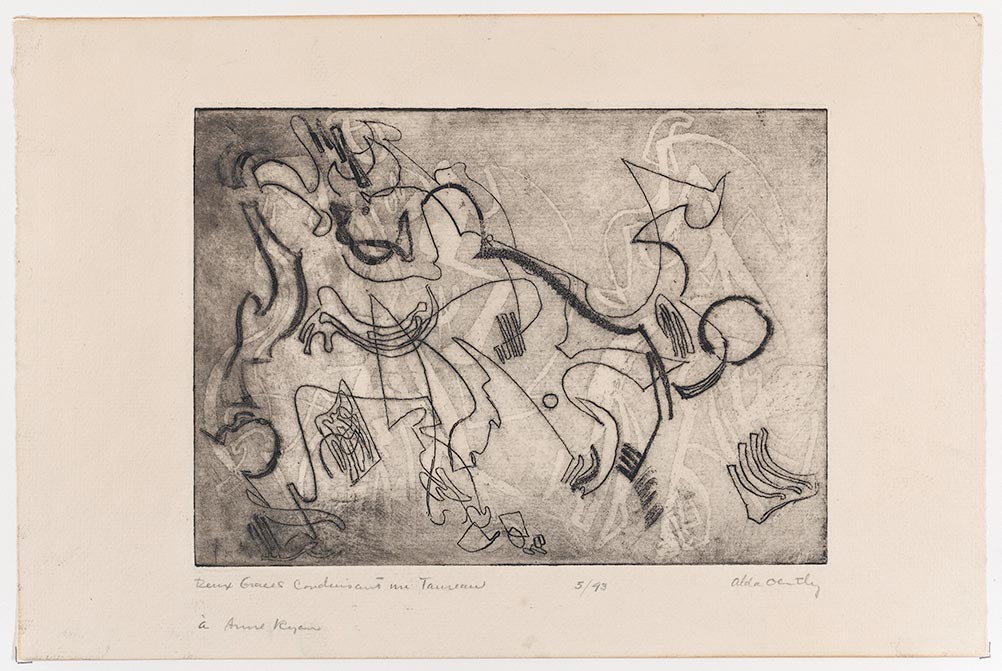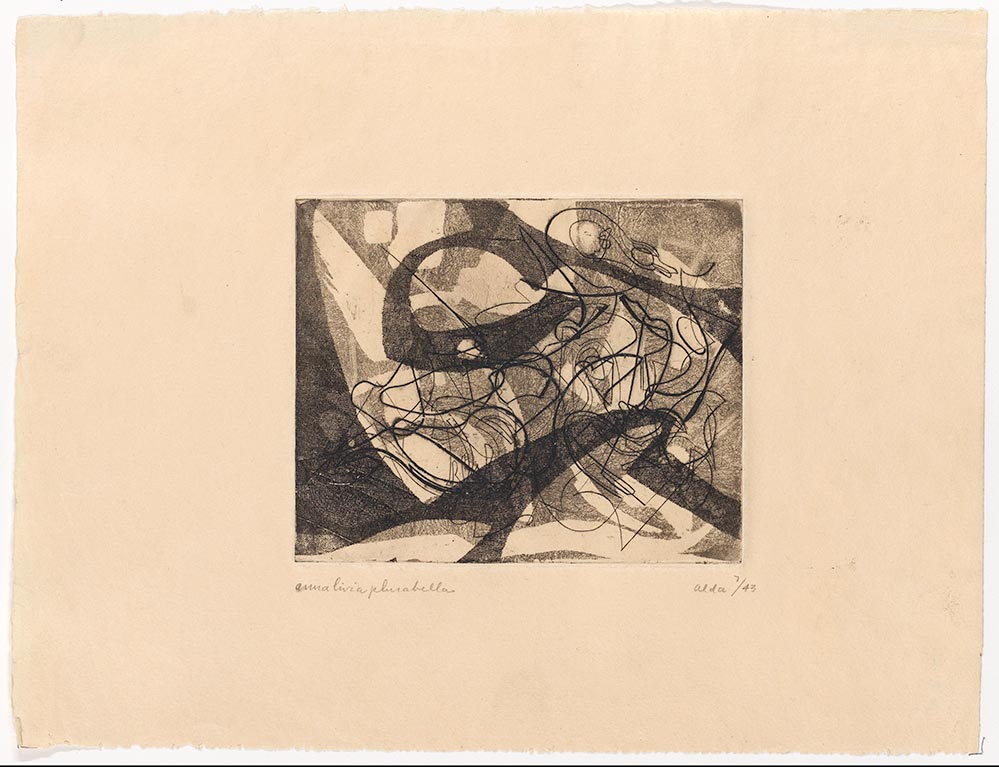66. Alda F. Oertly
| Life Dates | 1905-1994 |
| Place of Birth | Washington, DC, USA |
| Place of Death | Quechee, VT, USA |
| Birth Name | Alda Froelich |
Alda Froelich was born in Washington, D.C. During the late 1930s, she spent time in Paris learning the field of typography and design.1 Sometime in the mid-1930s, she married Walter F. Oertly, with whom she had two sons, Frederick and Nicholas. In 1940, she published under her married name, contributing a translation of Carl Jung’s article about Picasso to the Papers of the Analytical Psychology Club of New York City.2 While living in Norwalk, Connecticut, she attended Barnard College between 1943 and 1948, graduating cum laude with a major in English.3 During this period, she must have also joined Atelier 17 since Anne Ryan had two prints by Oertly in her portfolio of prints exchanged with other artists. Both are wonderful examples of surrealist automatism, reflecting both the strong influence of European expatriates on Atelier 17 at this moment and Oertly’s own interest in Jungian ideas. The first sentence of her graduating profile for Barnard’s yearbook, The Mortarboard, offers a tantalizing view of her creative perspective and the impact of Atelier 17: “Alda Oertly is an engraver by trade.” She had two children, Frederick and Nicholas, and continued living in Norwalk through at least 1970.4 Nothing further is known about Oertly’s life or artistic work.5
Notes
- Information courtesy Oertly’s senior profile in Barnard College’s yearbook The Mortarboard for 1948, p. 97. According to ship manifests, she made a visit to France in 1937 for an undetermined length of time. Ancestry.com, New York, Passenger and Crew Lists (including Castle Garden and Ellis Island), 1820-1957 (Provo, UT: Ancestry.com Operations, Inc., 2010). ↩
- Carl G. Jung, “Picasso,” in Papers of the Analytical Psychology Club of New York City, trans. Alda F. Oertly (New York: Analytical Psychology Club, 1940). ↩
- Attendance confirmed by Barnard College, Office of the Registrar, email to Christina Weyl, January 11, 2017. ↩
- Oertly is mentioned in “Planning Committee FIghts Eight Subdivisions,” The Bridgeport Post, May 4, 1970, 44. The names of Oertly’s children are mentioned on her gravestone, courtesy Find A Grave. ↩
- According to the Social Security Death Index, Oertly’s last known residence was in Quechee, Vermont, though she is buried in Nelson City, New Zealand (see above, courtesy Find A Grave). Ancestry.com, U.S., Social Security Death Index, 1935-2014 (Provo, UT: Ancestry.com Operations Inc, 2011). ↩


